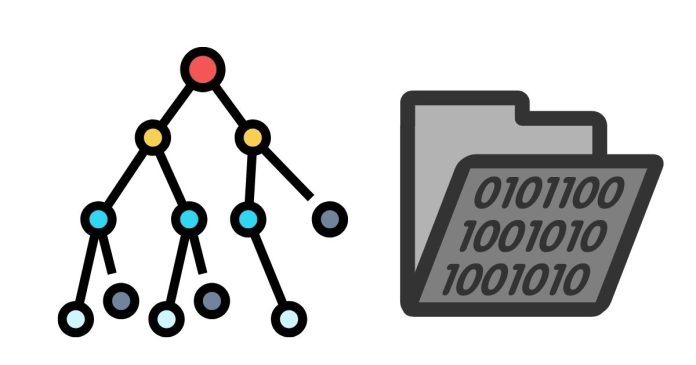Binary trees are a fundamental data structure in computer science, widely used in areas such as data organization, algorithms, and even artificial intelligence. Their simplicity and flexibility make them a cornerstone of computational logic. In this article, we’ll explore what a binary tree is, its properties, types, common operations, and real-world applications.
What is a Binary Tree?
A binary tree is a hierarchical data structure in which each node has at most two children, often referred to as the left child and the right child. At its simplest, a binary tree consists of nodes connected by edges. Each node contains three main components:
- Data: The value stored in the node.
- Left Child: A reference to the left child node.
- Right Child: A reference to the right child node.
The topmost node of a binary tree is called the root. Nodes without any children are called leaf nodes, and nodes with at least one child are referred to as internal nodes.
Key Properties of Binary Trees
- Height of a Tree: The height is the length of the longest path from the root to a leaf.
- Depth of a Node: The depth of a node is the number of edges from the root to the node.
- Subtrees: Each node in a binary tree acts as the root for its own subtree.
- Size: The size of a binary tree is the total number of nodes it contains.
Types of Binary Trees
Binary trees come in various types, each suited for specific use cases:
1. Full Binary Tree
In a full binary tree, every node other than the leaf nodes has exactly two children.
2. Complete Binary Tree
A complete binary tree is a tree in which every level, except possibly the last, is completely filled. Nodes in the last level are as far left as possible.
3. Perfect Binary Tree
A perfect binary tree is a type of full binary tree in which all leaf nodes are at the same level, and every parent has exactly two children.
4. Balanced Binary Tree
In a balanced binary tree, the height difference between the left and right subtrees of any node is at most one.
5. Binary Search Tree (BST)
A binary search tree is a binary tree in which the left child of a node contains only values less than the parent node, and the right child contains values greater than the parent node. This property makes BSTs ideal for searching and sorting.
Common Operations on Binary Trees
1. Traversal
Traversal refers to visiting each node in a specific order. There are three primary traversal techniques:
- Inorder Traversal (Left, Root, Right): Produces sorted output for BSTs.
- Preorder Traversal (Root, Left, Right): Useful for creating a copy of the tree.
- Postorder Traversal (Left, Right, Root): Commonly used for deleting a tree.
2. Insertion
Inserting a node involves adding it to the tree while maintaining the tree’s structural properties.
3. Deletion
Deletion removes a node from the tree. Depending on the node’s position, three cases arise:
- Node with no children.
- Node with one child.
- Node with two children (replacement with the in-order successor or predecessor is needed).
4. Searching
Binary trees, especially BSTs, are efficient for search operations, with an average time complexity of O(logn)O(\log n).
Real-World Applications of Binary Trees
Binary trees are not just theoretical concepts—they have numerous practical applications:
- Expression Trees Expression trees are used in compilers to represent expressions in programming languages. Operators form the internal nodes, and operands form the leaves.
- Binary Search Trees BSTs are the backbone of many search operations in databases and file systems.
- Priority Queues Binary heaps, a type of binary tree, are used to implement priority queues in algorithms like Dijkstra’s shortest path.
- Huffman Coding Huffman trees, a form of binary tree, are used in data compression techniques.
- Navigation Systems Trie structures, based on binary trees, are used in navigation systems for prefix-based searches.
Advantages and Disadvantages of Binary Trees
Advantages:
- Efficient Searching and Insertion: For balanced trees, operations like searching and insertion are logarithmic.
- Flexibility: Binary trees can adapt to various use cases through specialized forms like BSTs or heaps.
Disadvantages:
- Unbalanced Trees: Insertion in an unbalanced binary tree can degrade performance to O(n)O(n).
- Complexity: Implementing and maintaining a balanced binary tree can be complex.
Conclusion
Binary trees are an indispensable part of computer science, enabling efficient data storage, retrieval, and manipulation. From simple tasks like searching to complex algorithms in machine learning, they form the backbone of numerous computational processes. Understanding their structure, properties, and applications can significantly enhance your programming and problem-solving skills. Whether you’re preparing for technical interviews or working on real-world projects, mastering binary trees is a must for every developer.



